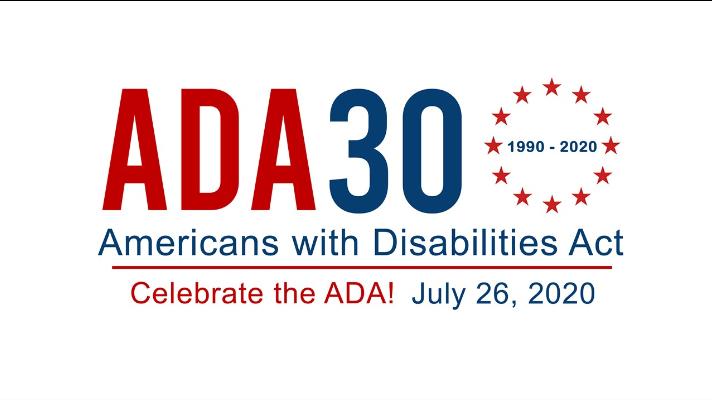
The year 2020 marks the 30th anniversary of the signing of the Americans with Disabilities Act (ADA).
It’s a historic year, and a good time for museums and other cultural venues to refocus efforts on meeting the legal, moral, and curatorial challenges of providing access and inclusion for all people, especially people with vision loss. One important tool is the accessible audio tour – to use in your museum or on your website. We’re going to explore that in a little depth here and review the accessible tour vs. the inclusive accessible tour.

An accessible audio tour weaves together language for the ear, the emotional power of sound, friendly narration, and audio description (AD). Audio description uses words to represent the visual world and helps people who are blind or have low vision participate in visual culture. Venues have discovered that audio tours written with AD can make exhibitions accessible to people who are blind or have low vision.
Having written and produced accessible tours with AD for more than 10 years, during that time I have seen changes in their design and use. Traditionally, museums created separate AD tours for visitors with sight loss. Museums still successfully use these AD tours. For instance, I have written such tours for the National Center for Civil and Human Rights, the Green Bay Packers Hall of Fame, Grand Central Terminal, and the World Trade Center’s One World Observatory.
But in the past few years, some venues have explored creating Inclusive accessible tours that serve both visitors with sight and visitors with vision loss. It’s a design that integrates audio description with curatorial or historical information -- an approach that supports inclusiveness, not just accessibility. All visitors share common experiences and are not separated by ability. And producing one tour instead of two is cost effective for a museum.
The New-York Historical Society has both types of tours. In the past, the Inclusive tours I wrote were accessible to all visitors whether sighted or blind. The key to a successful Inclusive tour is finding the correct balance of artistic or historical context and audio description, in a length that won’t bore the visitor. A skilled writer, working with the client, needs to determine how much audio description is adequate for a person who can’t see the artwork or artifact and how to integrate it with the other information. Sighted visitors usually appreciate the added level of description because it sharpens their viewing experience (“Oh, I didn’t see that.”) and affirms their perceptions (“Ah yes, I knew that was blue.”)
The best thing any audio tour can do, for sighted or blind visitors, is to help them look more closely and carefully. An Inclusive accessible audio tour can focus attention, making for a richer experience, especially for sighted visitors who choose not to read wall labels.
That was the result of working with Orpheo recently on audio tours for the new National Museum of the US Army opening later this year in Virginia. We created three Inclusive tours for the museum that integrate historical facts, music, sound effects, narration, and audio description. Both sighted and blind visitors to the museum will be able to enjoy the tours.
If there is a downside to an integrated approach, it is that some people with vision loss may want more detailed audio description, and that is a valid criticism. In that case, a museum might add an optional "layer" of AD to a tour. For example, the narrator could prompt a visitor to "press 5 for a detailed audio description of this work." But I have found that in most cases, Inclusive audio tours provide experiences that can be shared by both audiences, whether in a museum or on a website.
And speaking of websites, a museum can also add recorded audio description to virtual exhibits on its website, for existing exhibits or for new exhibits specifically targeted to visitors who cannot physically visit the museum. Using smartphones, tablets, or computers website visitors can listen to audio description of artworks or objects along with curatorial information. An example is the website American Art, which I wrote for the national advocacy organization Art Beyond Sight. Visitors can hear recordings that combine creative use of sound with audio description to describe works from the Brooklyn Museum and the Whitney Museum of American Art.
Your museum probably long ago followed ADA guidelines and widened the entrance or installed a wheelchair ramp. Now, make sure visitors with sight loss can not only enter your venue but can have programmatic access to your museum with an accessible audio tour.
For more on the design of accessible tours and how museum educators or curators can learn the art and craft of audio description writing, visit the website -- www.writingad.org.

Lou Giansante is award-winning writer, producer, and narrator of audio tours for all audiences, with special expertise in writing for children and for people with vision loss. Lou partners with Orpheo creating PWA apps, standard apps and audio guide tours.
www.lougiansante.org www.orpheogroup.com/us
